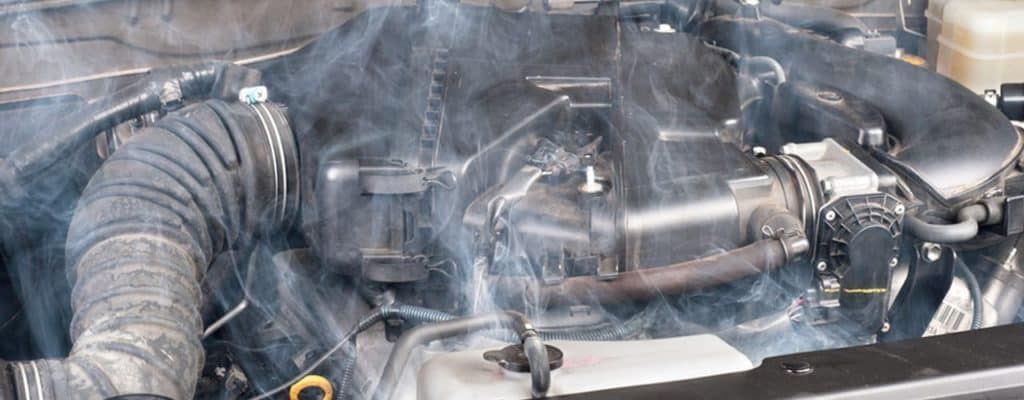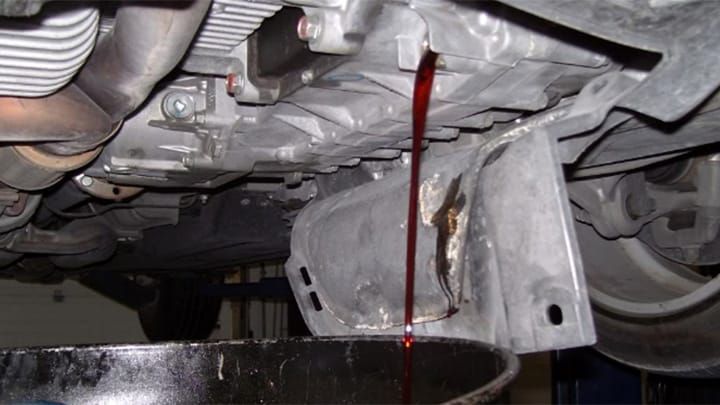Transmission Fluid Leak: Symptoms and Causes
Did you know a transmission fluid leak is one of the serious issues for your car, SUV, or truck? Also known as transmission oil, its function is to lubricate and protect transmission parts. Yes, you guess it right! Transmission fluid’s job is similar to motor oil that lubricates and protects engine parts from various problems.
In the fluid leak, low levels start affecting your transmission performance and damage its essential parts. That’s why it’s imperative to understand the functionality of the fluid and know when it’s leaking. If you need more information on the fluid leak, this blog has got you covered!
What Does Transmission Fluid Look Like?
There’s a possibility that another liquid might be dripping from underneath your vehicle. Therefore, you need to know what does transmission fluid leak color looks like. This way, you can quickly identify a leak, get it fixed and prevent the occurrence of a bigger problem.
It’s often in red with a thicker consistency. Suppose you’re curious to measure how thick it is. Remember that it’s thicker than brake fluid, but it isn’t as thick as engine oil. However, transmission fluid manufacturers opt for different colors.
When it comes to checking whether it’s transmission fluid leaking from your car, you need to follow a simple process. In the process, put down a neutral-colored cloth or towel with something heavy on it. The next step is to park your car over the fabric.
To do it correctly, don’t hesitate to refer to your owner’s manual where your vehicle’s engine block or transmission is located to position your car accurately. Then, you need to wait for a few hours to see the fluid’s color dripped onto the fabric.
Why Transmission Fluid Matters?
Do you want to drive a car with faulty transmission? The answer is no! Since transmissions are the essential component of cars, they are often expensive to repair in most modern vehicles.
Moreover, your transmission plays a significant role when it comes to the overall functionality of a vehicle. It ensures that the accurate power goes to the wheels to run at a given speed.
The fluid also works as a multipurpose fluid and hydraulic solution, increasing the lifespan of your gasket and seals. It needs to be flushed every 30,000 to 50,000 miles, depending on your vehicle’s model.
On the other hand, if you have a habit of hauling a significant amount of weight, you need to replace fluid after 15000 miles.
Transmission Fluid Leak Symptoms
Fluid leaking is a serious issue. However, it’s a common vehicle problem that you can overcome with ease. If you don’t know how to spot the transmission leak, we’ve listed a few signs to help you.
Check Dashboard Light
Modern cars feature dashboard warning lights. Their sole purpose is to warn you against any engine problems. Your transmission light could blink for various reasons.
For example, if your fluid causes transmission to get hotter than usual. At this point, it’s best to look at your owner’s manual and see what a particular warning light is trying to tell you.
Monitor the Dipstick
For any concerns regarding your transmission, it’s best to check your transmission fluid level. You can do it by looking at the dipstick. To check the levels, you need to remove the dipstick, clean it, put it back, and remove it again.
Your transmission fluid should be pink and somewhat clear. If you find it in a brownish color tone, you need to replace it. In the case of a low level, add the required amount carefully. Because if you overfill it, the fluid might run hot.
Look for Grinding Gears
Your transmission won’t behave correctly if the fluid level gets low. This situation will reveal itself in the form of suspicious symptoms, such as grinding gears.
Moreover, this sound could be an indication of a damaged transmission synchronizer. In this case, check your fluid levels or take your vehicle to a nearby professional mechanic to get an accurate diagnosis.
Check Transmission Leaks
Suppose you’re looking for a practical way to determine if your transmission fluid is leaking. You can take a look beneath your car and examine transmission fluid leaks when parked. Leaking fluid leaves dark spots on your driveway or garage. If you find those spots, you know it’s time to take action.
Observe Strange Vibration
Apart from unusual sounds, you’ll notice a strong vibration while driving your car. If so, it means your gears are slipping. Low fluid levels also make your transmission not behave as it should.
It’ll also result in strange functionality, such as sudden surge or extreme slowness. It doesn’t only cause vibration and unreliable performance, but it shows your car isn’t safe to drive.
Notice Clunking Sounds
Clunking sounds also indicate a possible transmission problem. If you start noticing such sounds, don’t ignore them. Bring your vehicle to a professional mechanic.
Excessive Transmission Heat
Since the transmission is responsible for managing a lot of work, it needs a sufficient amount of fluid. When fluid level decreases, the gears don’t have adequate lubrication.
And gears start to get hot. Therefore, keep an eye on the signs on the dashboard that tell your engine is overheating.
Facing Delay in Acceleration
Your transmission enables switching gears quickly. The gear shift is effortless under normal conditions that you don’t even notice it.
However, in the case of low transmission levels, you’ll notice a delay in response when you shift gears. Also, your car won’t accelerate as smoothly as you want it.
When you press down on the gas pedal, the engine revs but doesn’t move as instantly as it should, if you notice it, take it as a sure sign to get your transmission inspected.
Notice Burning Smell
When transmission leaks, you’ll notice unusual smells that tell you something is off. A burning smell could be a sign of transmission fluid overheating.
Although there’s no need to panic, take your car to a mechanic when you notice a transmission fluid leak smell.
Causes of Transmission Fluid Leaks
Your transmission may be leaking due to minor or major issues. The question is, what causes a leaky transmission? Despite the type of problem, you shouldn’t take a leaky transmission easy.
Get it inspected right away and find a reliable solution. Here are some common causes of fluid leaks.
Transmission Drain Pug or Pan
It’s common for transmission pan to experience wear and tear as it is susceptible to damage from loose rocks and debris on the road.
Moreover, leaks occur when your pan gets a small puncture or loose drain plugs or bolts. If a big rock damages the pan, your transmission will lose the fluid instantly. With small holes or punctures, fluid loss is gradual.
Broken Seals
Your automatic transmission sustains hydraulic pressure using various transmission seals. The transmission fluid leak sealer breaks or damages over time if it’s exposed to heat.
If your transmission is leaking from this part, you’ll need to inspect multiple areas of your transmission. Under standard conditions, you’ll find the leaky seal in the input and output shaft.
Pan Gasket Damage
Another cause of the leaky transmission is a damaged and cracked gasket. It often occurs due to inefficient manufacturing.
It could be a result of improper gasket alignment during the installation or consistent exposure to hot temperatures. Moreover, replacing the pan gasket is reasonable, so there’s no point in delaying it.
Torque Converter Leakage
Transmission fluid goes into the whole system through the torque converter. If the torque pump has damaged needle bearings or crack on its body, it leads to leaky transmission.
This problem isn’t simple to fix; you need to see your mechanic right away. While inspection, you can also detect transmission fluid leaks between engine and transmission. And get it fixed at the earliest.
Cracked Fluid Line
Transmission fluid lines are either made of aluminum or steel. Although these lines are sturdy, they get damaged from road debris or exposure to heat.
Over to You!
As mentioned, transmission fluid leaks are common, but you shouldn’t ignore the problem. Overlooking these issues will only bring more problems and multiple repairs in the future. Don’t forget that specific causes lead to a leaky transmission. You can identify it by noticing strange or unusual sounds or smells and other symptoms.
If your transmission fluid leaks only when running or there’s another reason, you need to get it inspected professionally. When you opt for our automatic transmission services , you’ll get an opportunity to get it checked thoroughly. This way, you will solve the problem and elevate the lifespan of your transmission.
FAQs
1)How serious is a transmission fluid leak?
One broken seal can lead to transmission fluid leaks. In an automatic transmission, fluid leak makes your car maintain accurate speed and shift. In severe conditions, your vehicle may cease to run or seize up you’re on the road.
2)How much does it cost to fix a transmission fluid leak?
It typically costs around $150-$200 to repair a leaky transmission. This repair cost includes pan bolts, seals, drain plugs, gasket, and fluid lines replacement.
3)Is it safe to drive with a transmission fluid leak?
It isn’t dangerous to drive a car with a leaky transmission. However, it doesn’t consider a good idea as your car may not run well. Transmission fluid leaks also occur due to a leak in the pan, which happens through wear and tear.
4)What does transmission fluid looks like when it leaks?
It has a red or brown color with a thick consistency. If you find a brownish-colored leak, you need to get professional help because this color indicates a hole in the transmission seal, which needs to be fixed.
The post Transmission Fluid Leak: Symptoms and Causes appeared first on Eagle Transmission.






